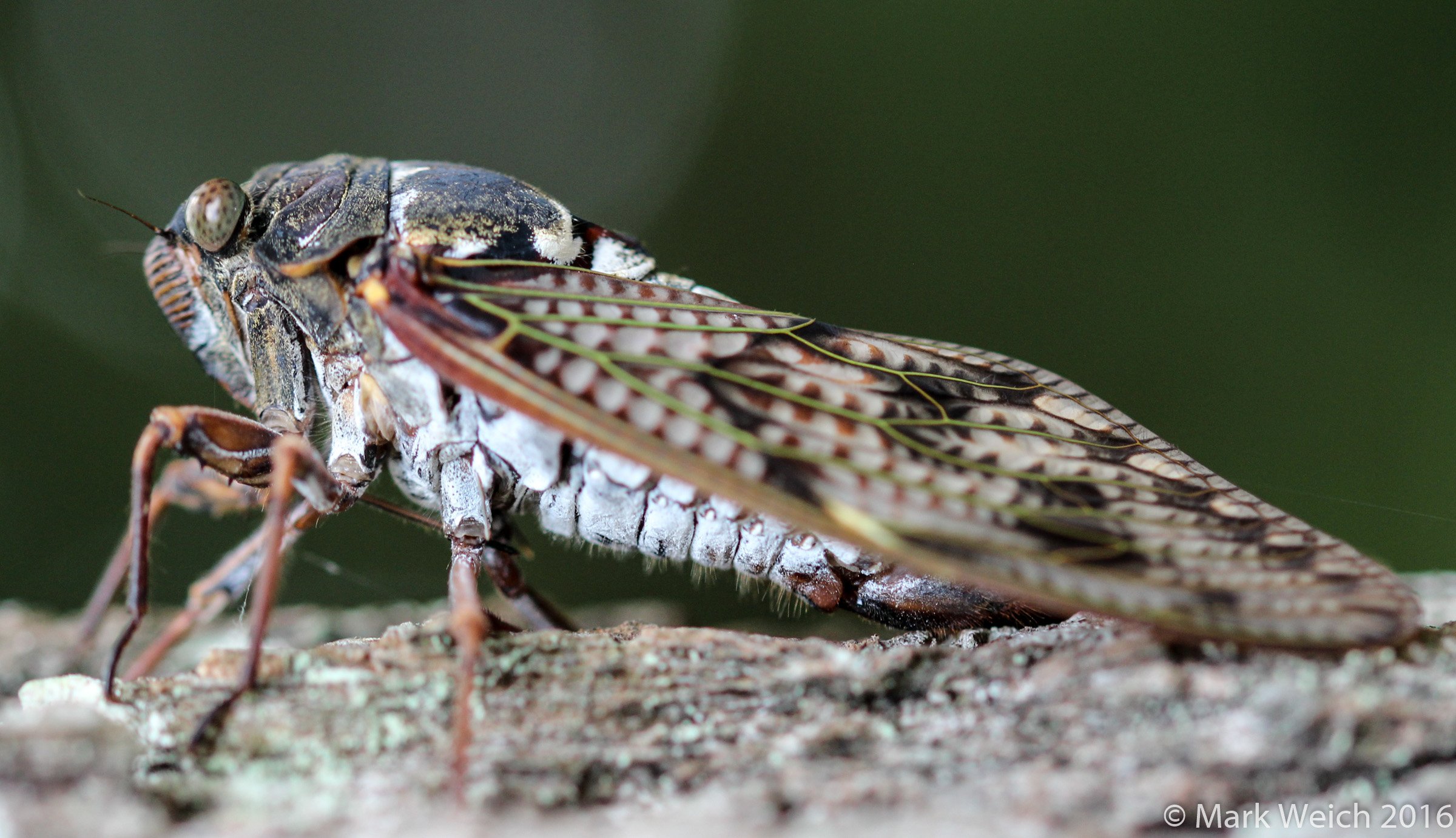
The 20th post in the series! Montrously large, loud and in huge swarms. Cicadas are quite famous for spending many years underground, up to 17 years in fact! The cicada above アブラゼミ Aburazemi or Large Brown Cicada (Graptopsaltria nigrofuscata) is a large 55mm-60mm body, 75mm wingspan, cicada found in East Asia. It usually spends 5 or 6 years underground as a nymph.
Let's take advantage of Steemit's formating to show the same cicada MUCH larger!
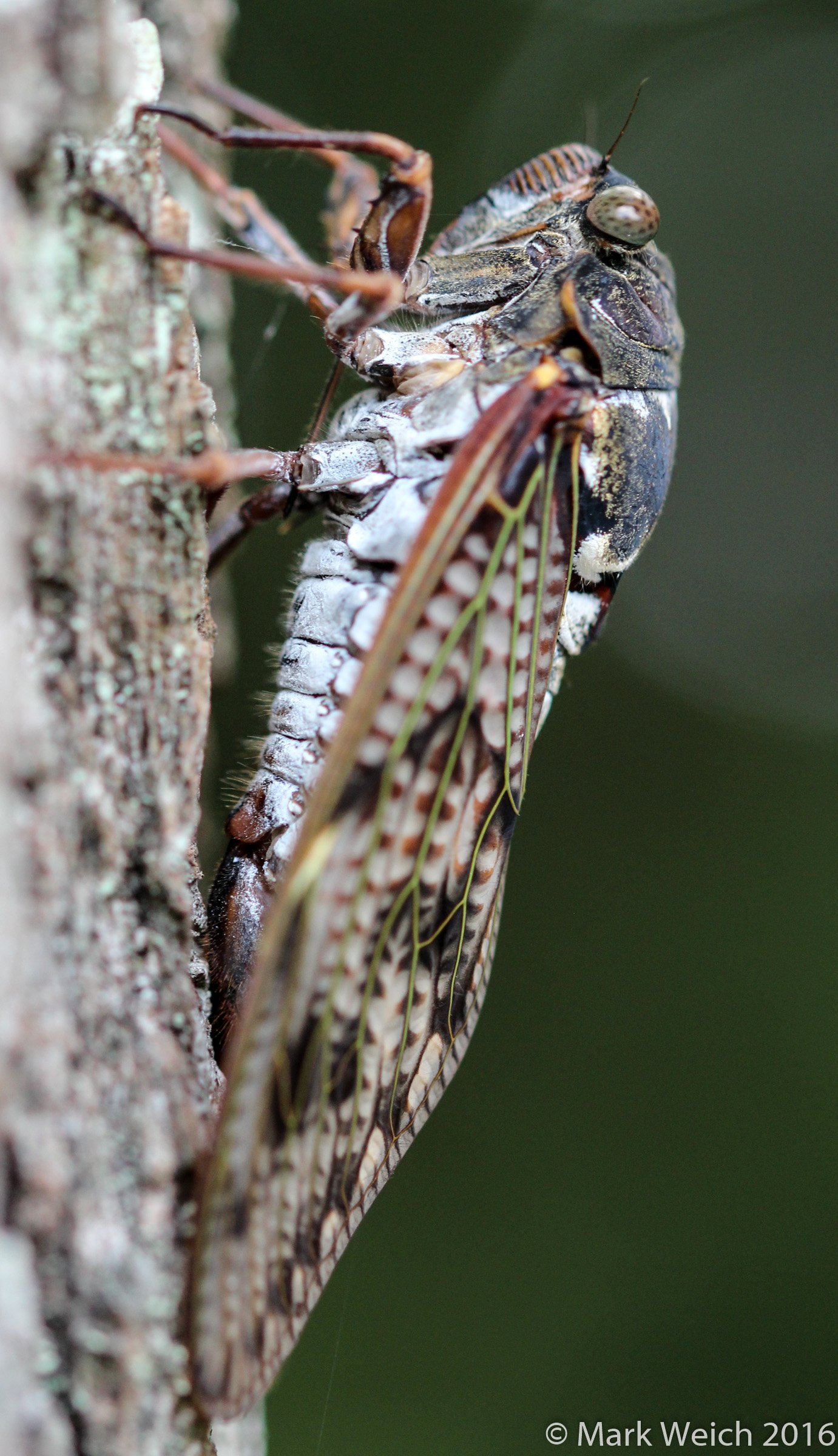
Tucked under the body, with the tip just visible after the last pair of legs is what remains of the mouth parts it used to drink sap from roots during those long dark years in the earth. As adults, cicadas do not eat, some have even lost these mouth parts altogether. Consequently, they emerge, sing, mate and lay eggs, then die in a few short weeks in the summer.
Looking closely at the first pair of legs above, it seems rather over muscled for merely clinging to tree trunks and branches. However, as a nymph it used those limbs in an even more robust form to dig through the soil searching for roots to pierce.
A discarded exoskeleton showing the powerfully developed forelimbs used for digging, I'm very glad they only eat plants!
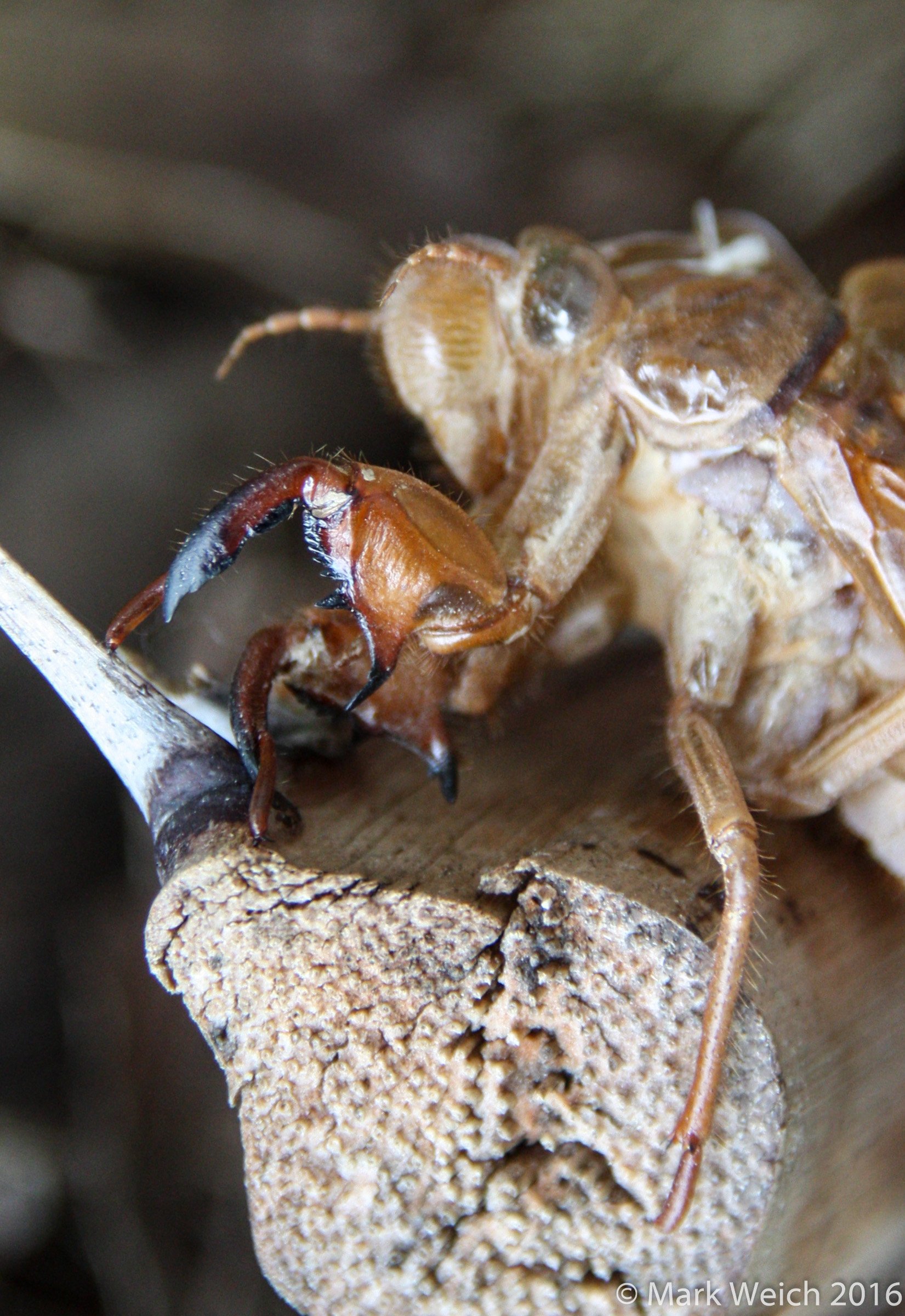
A truly massive amount of muscle used to manipulate the shovel like tip will make short work of even the most stubborn and compacted soils.
When it is time to emerge, no one wants to be late to the party, the ground near well established trees are riddled with holes:
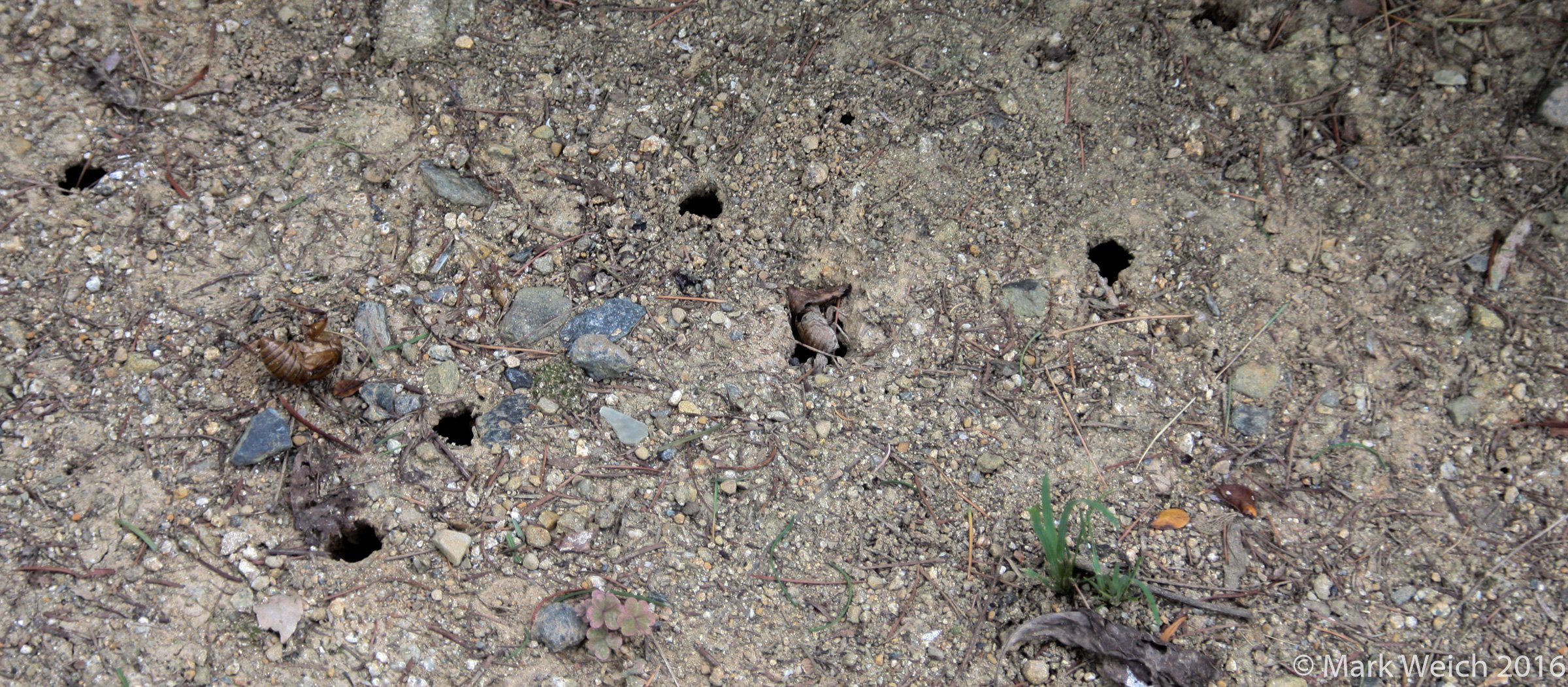
Some of the discarded husks have fallen off the tree above, nearly back down the holes!
I had the great fortune to spot a cicada molting on a tree trunk on my way home from work during the summer:
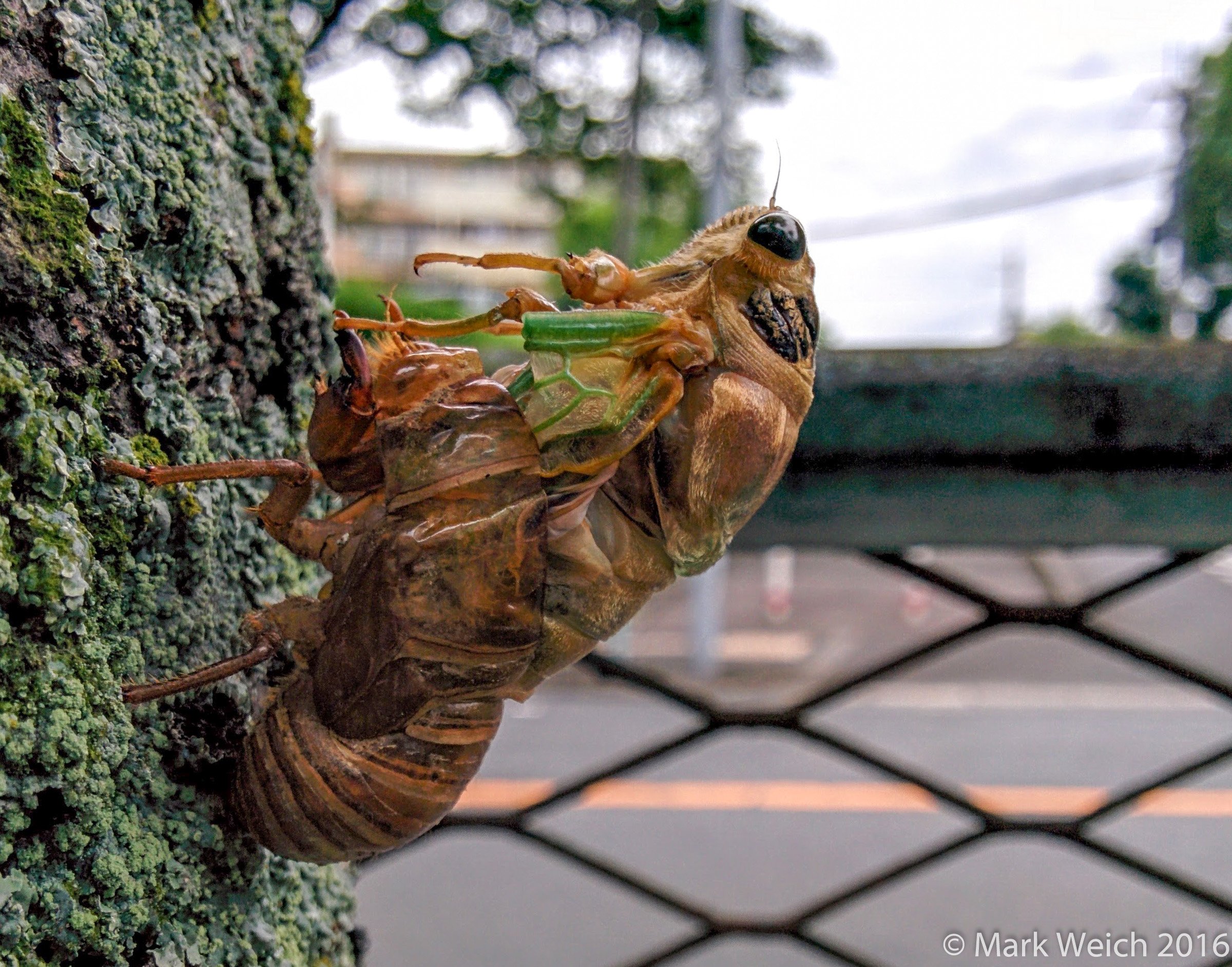
The back spilts open and they slowly push their way out to emerge as adults:
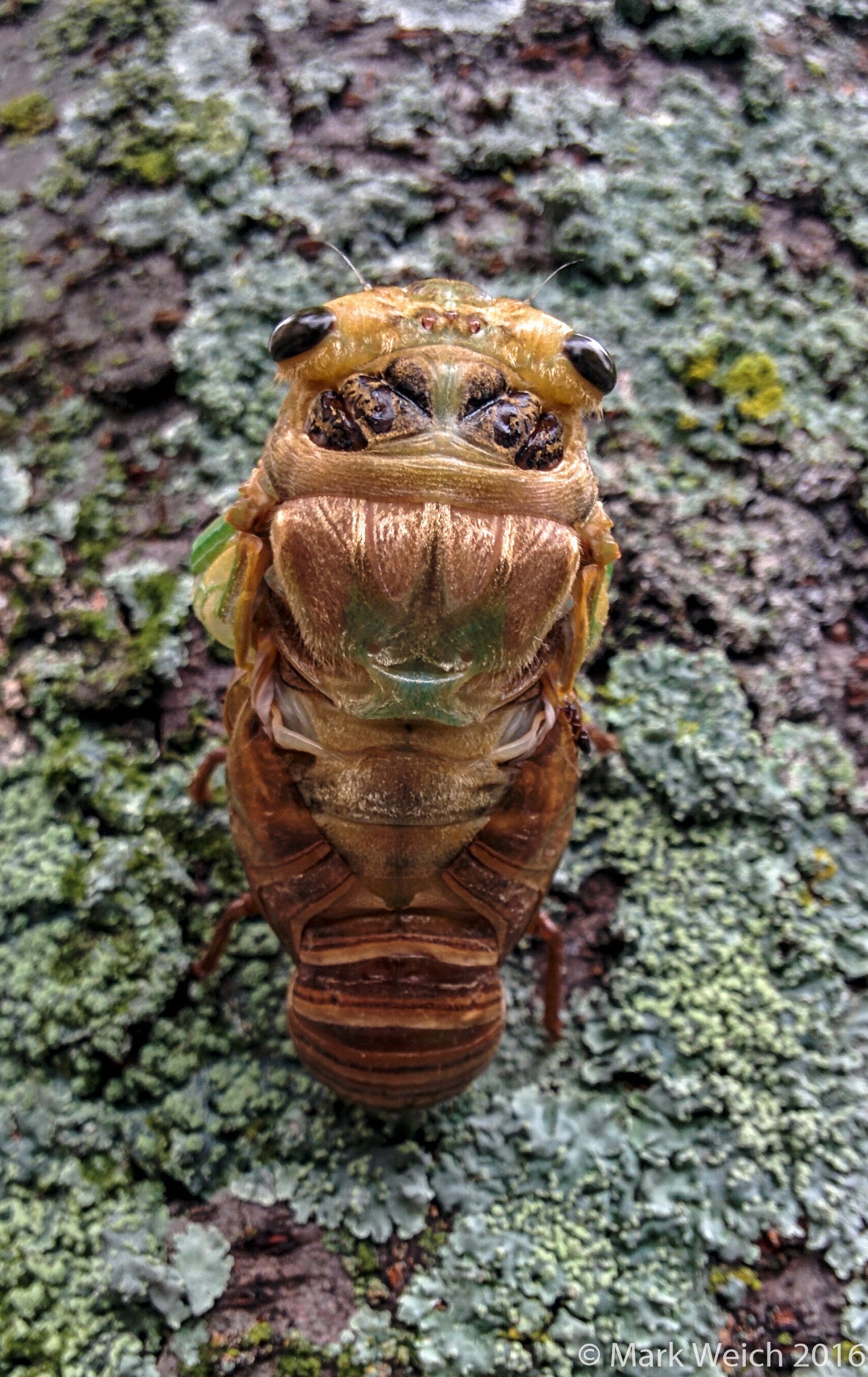
It will then hold on to the old exoskeleton as it pumps hemolymph into the wings and waits while the wings and its new skin hardens.
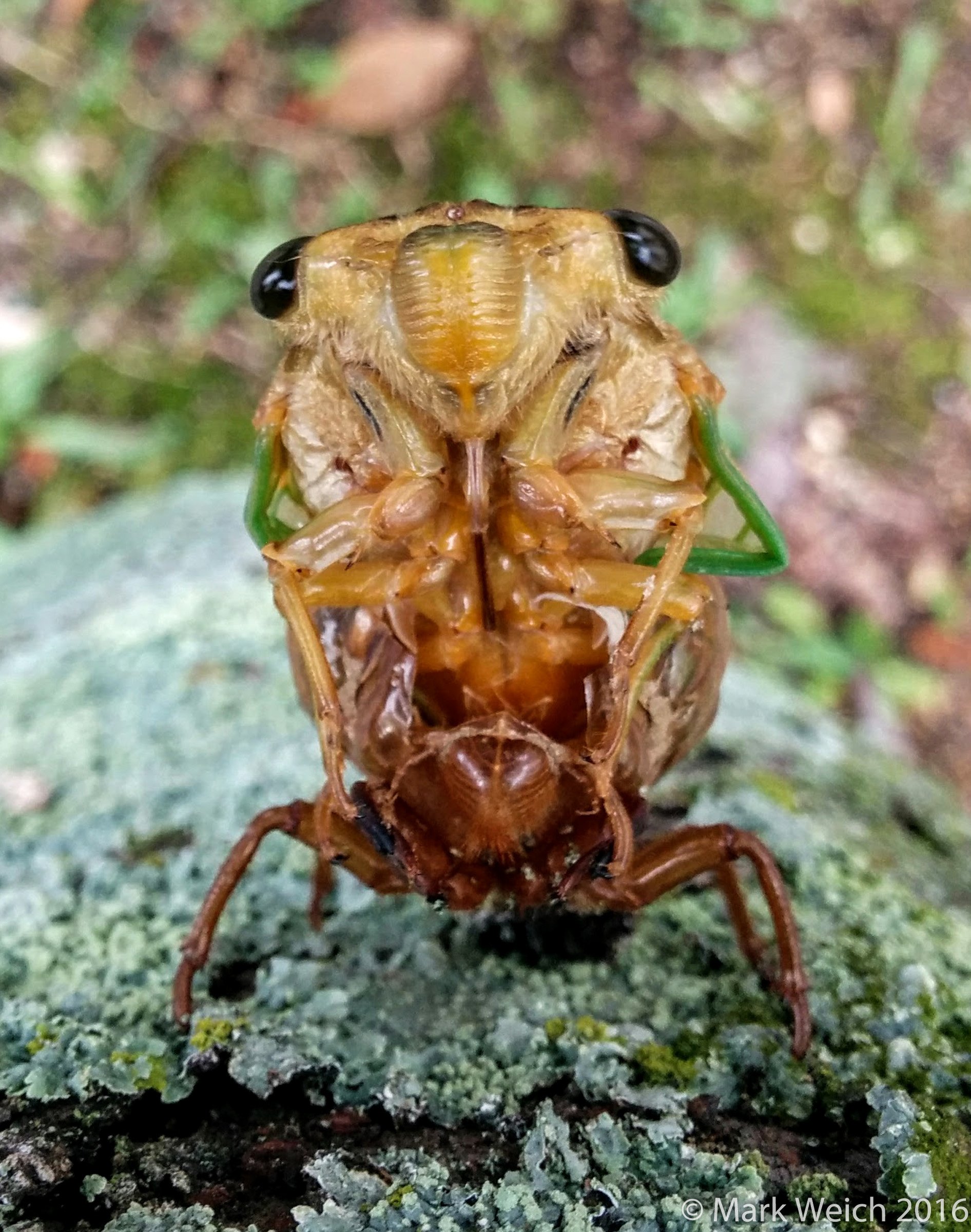
After which it will fly away to serenade or be serenaded, leaving behind its old clothes:
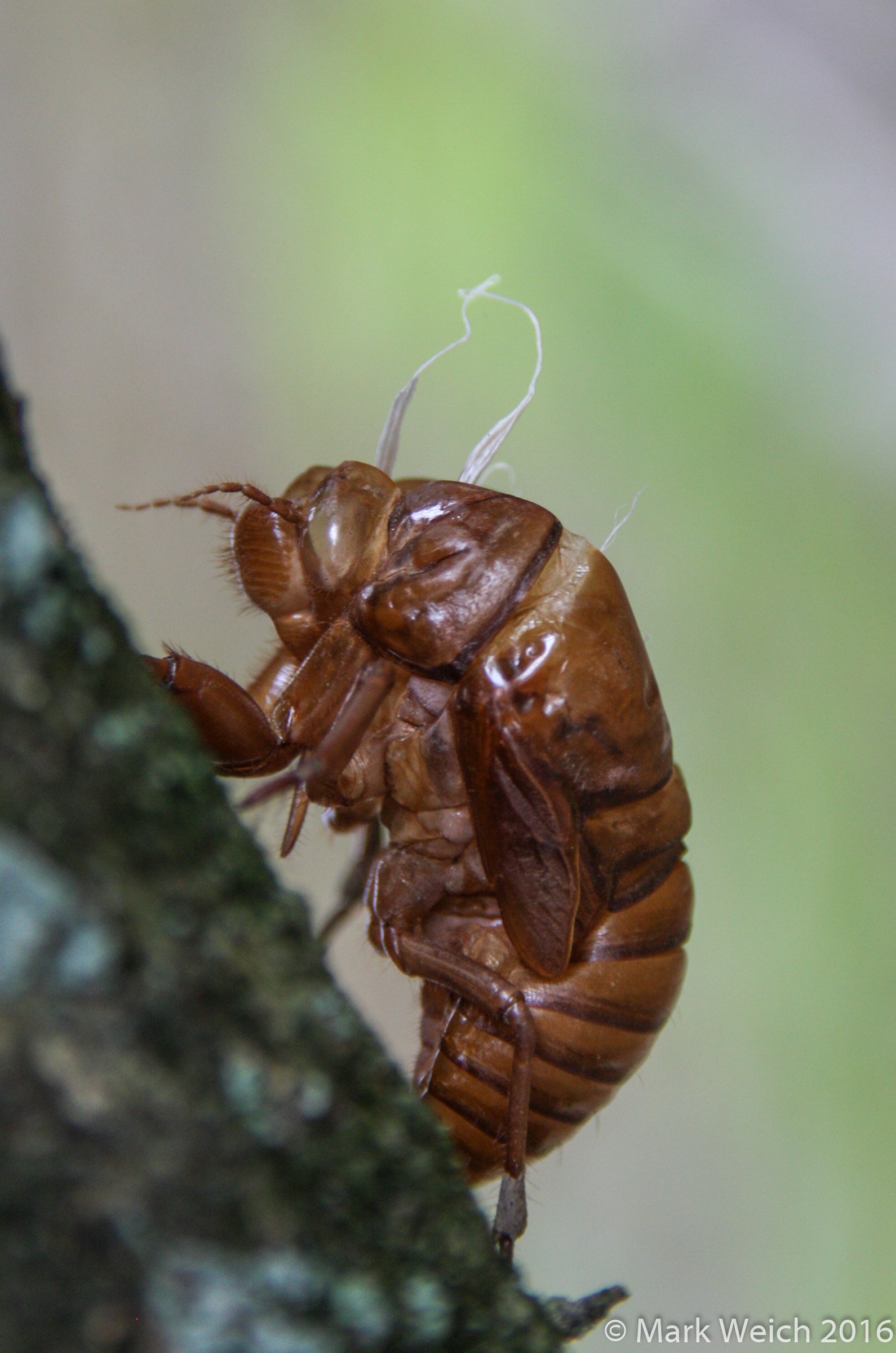
The small protective casings for the developing wings can also been seen!
I'm not entirely sure what the white stringy bits are, perhaps the linings of the larger tracheae. If you do know, please tell me in the comments!
Any solid, relatively stable surface will do as long as the adult can hang freely in the air so the wings can dry in their correct shape:
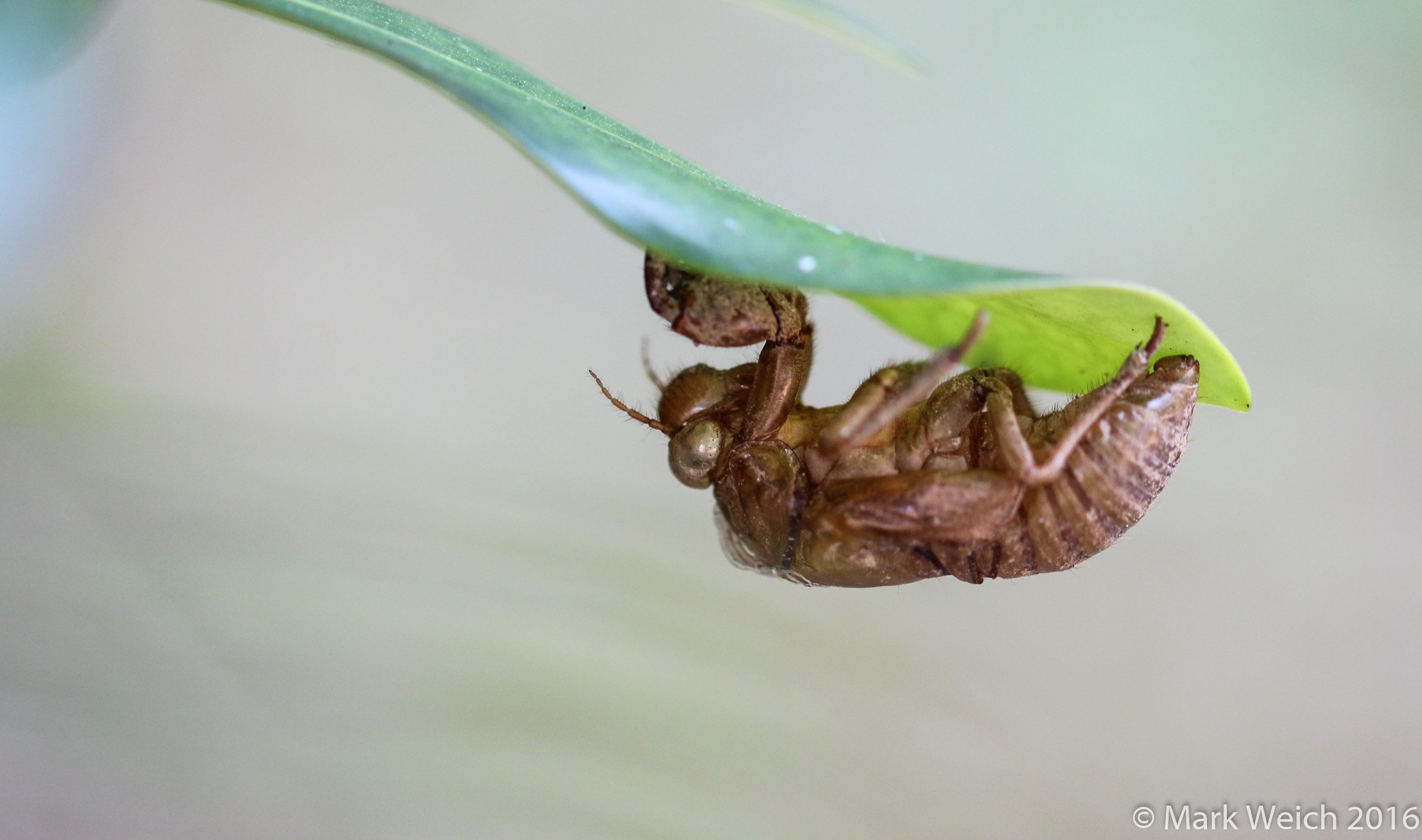
Japan hosts numerous species of cicada. Another large species is the クマゼミ Kumazemi, Bear Cicada (Cryptotympana facialis). Easily distinquished from the Large Brown Cicada by its black body and clear wings:
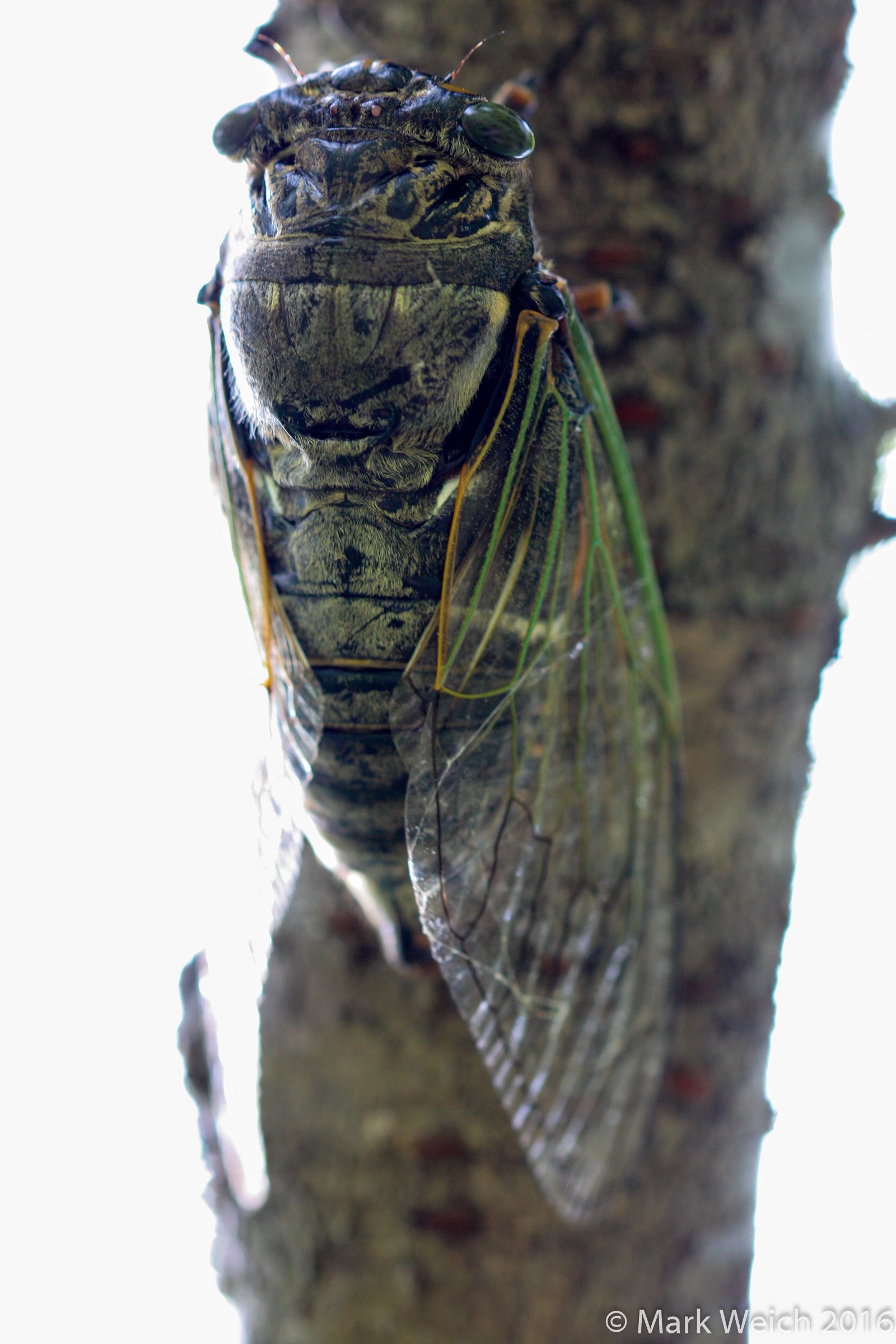
For such large insects they are very difficult to spot unless silhouetted against the sky.
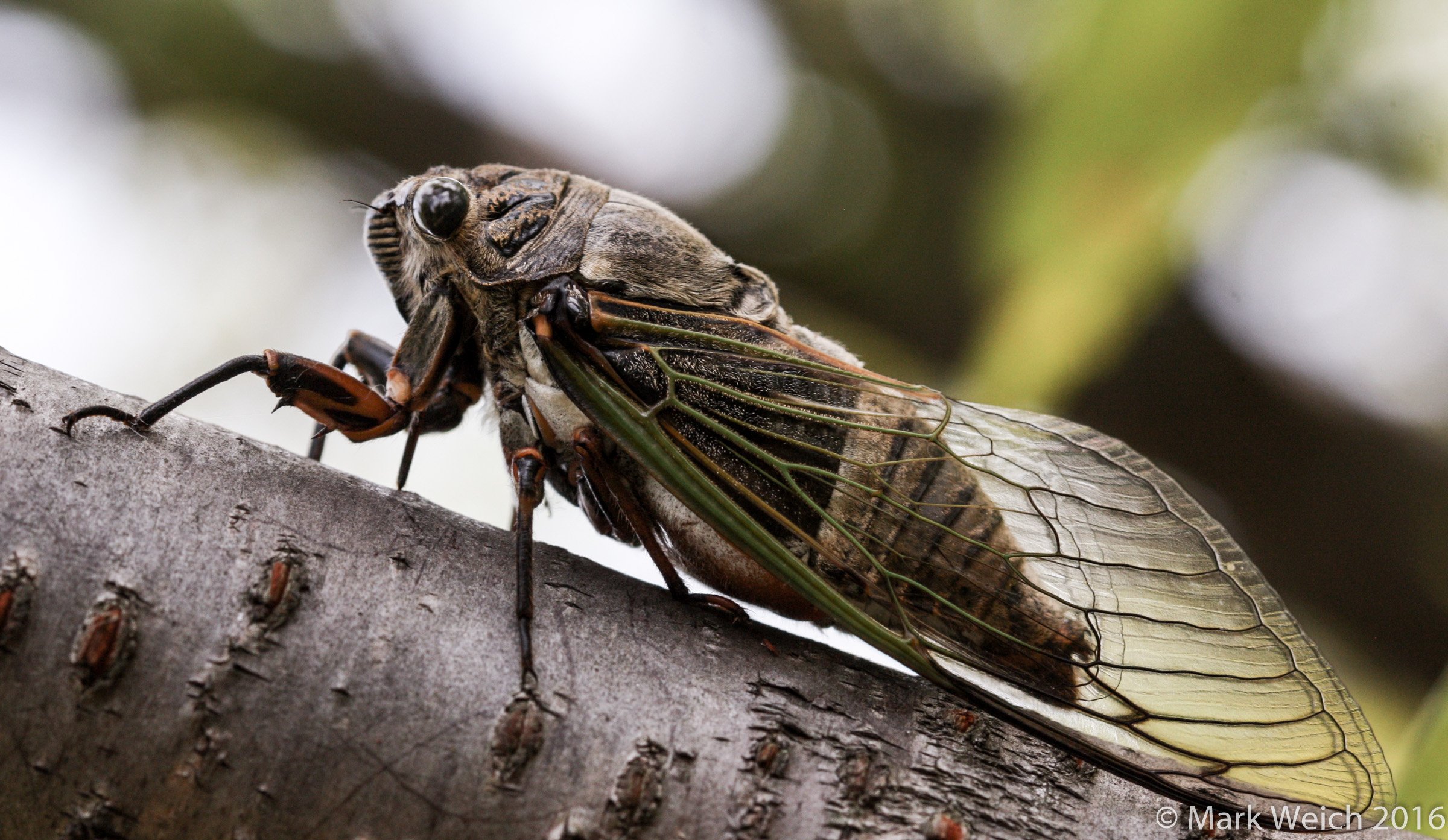
I often startle myself when I spot them, much closer and larger than I expected. They're big and exactly match the colour and texture of the trees they roost in.
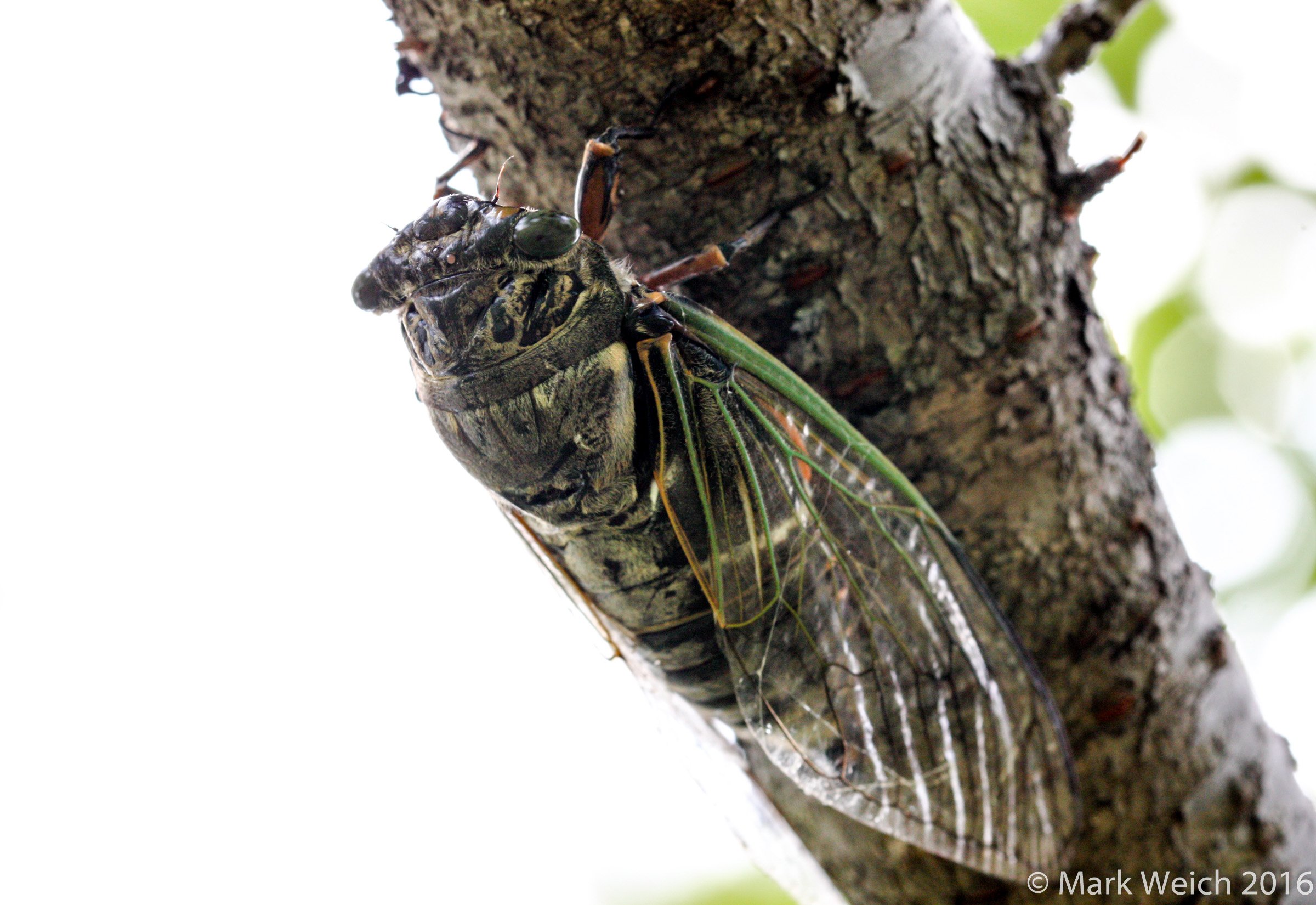
They're also clumsy fliers, their vision isn't all that great either; there's a good chance they will be unable to tell a human from a tree.
When startled or threatened, they let out a horribly loud hissing buzz, which is quite frightening if you didn't spot the very well camouflaged bug that was already occupying the bench you wanted to sit on!
BBRRRKKTKTKTKAKKTAAAKKKTTT!
Yeah, I admit it took a while for my heart rate to drop back down to normal.
Wikipedia Cicada for stats and species names.
Article in Japanese for stats on Aburazemi
Comments and feedback are always welcome.
Please upvote and follow to see the next installment in your feed!
Resteem if you think your followers would enjoy this post, thanks!
Also, if you like macro photography, check out some of the earlier posts in this series.
Little Monsters - Part I: Wolf Spiders
Little Monsters - Part II: Golden Orb Weaver
Little Monsters - Part III: Lynx Spiders!
Little Monsters - Part IV: Decorator Orb Weaver
Little Monsters - Part V: Black Back Paper Wasp
Little Monsters - Part VI: Dragonfly
Little Monsters - Part VII: Indian Fritallary
Little Monsters - Part VIII: Giant Japanese Hornet
Little Monsters - Part IX: Praying Mantis!
Little Monsters - Part X: Harlequin Ladybird!
Little Monsters - Part XI: Dragons!
Little Monsters - Part XII: Snails!
Little Monsters - Part XIII: Evil Weevils!
Little Monsters - Part XIV: Fantastic Phasmids!
Little Monsters - Part XV: To Bee or not to Bee?
Little Monsters - Part 16: Jumping Spiders!
Little Monsters - Part 17: Hawkmoth Caterpillars and Hawkmoths
Little Monsters - Part 18: Evil Doppelgangers - The Ant Mimic Spider
Little Monsters - Part 19: Hummingbird Hawkmoth!
I maintain and reserve copyright on all of my photos.
